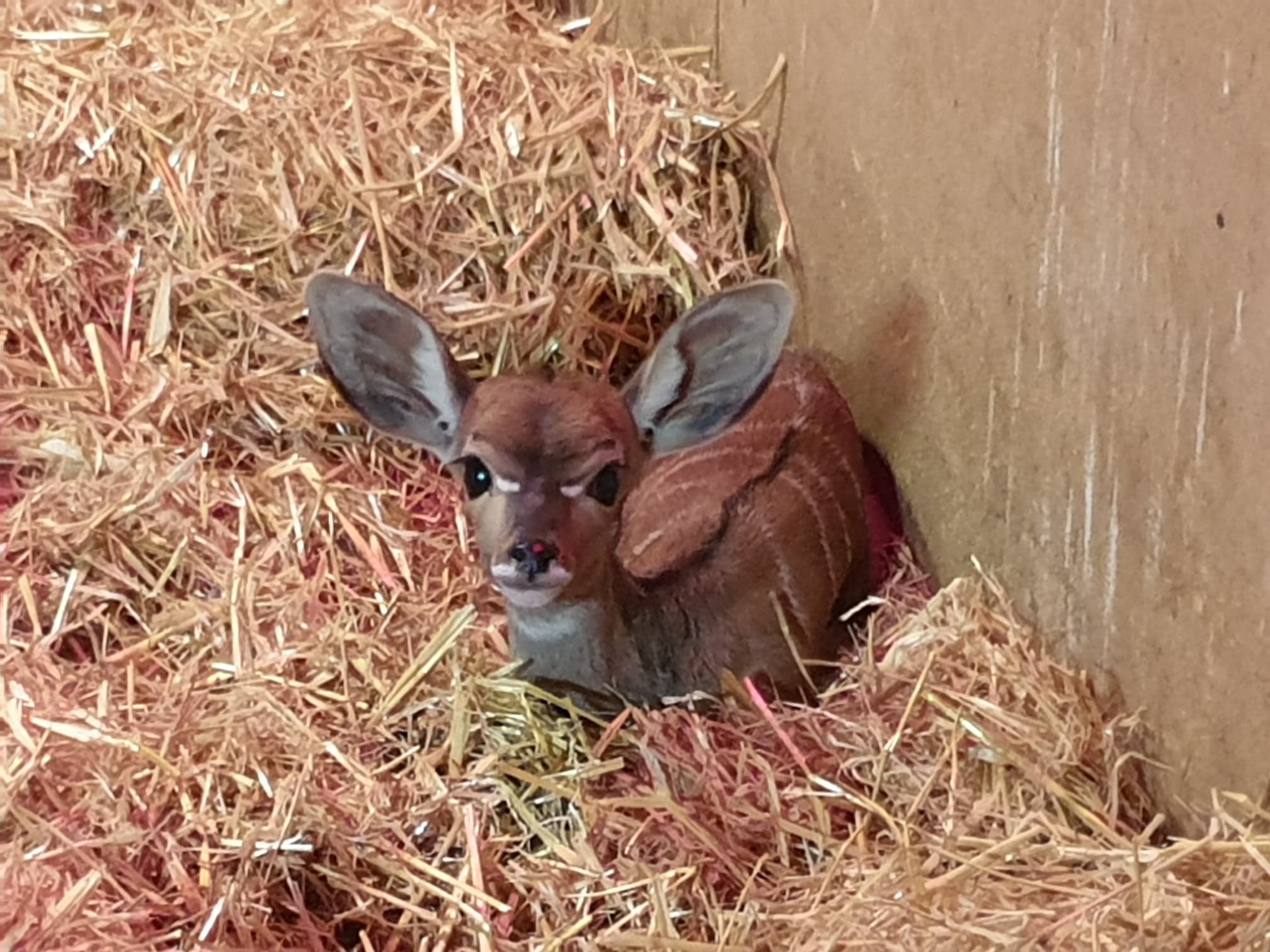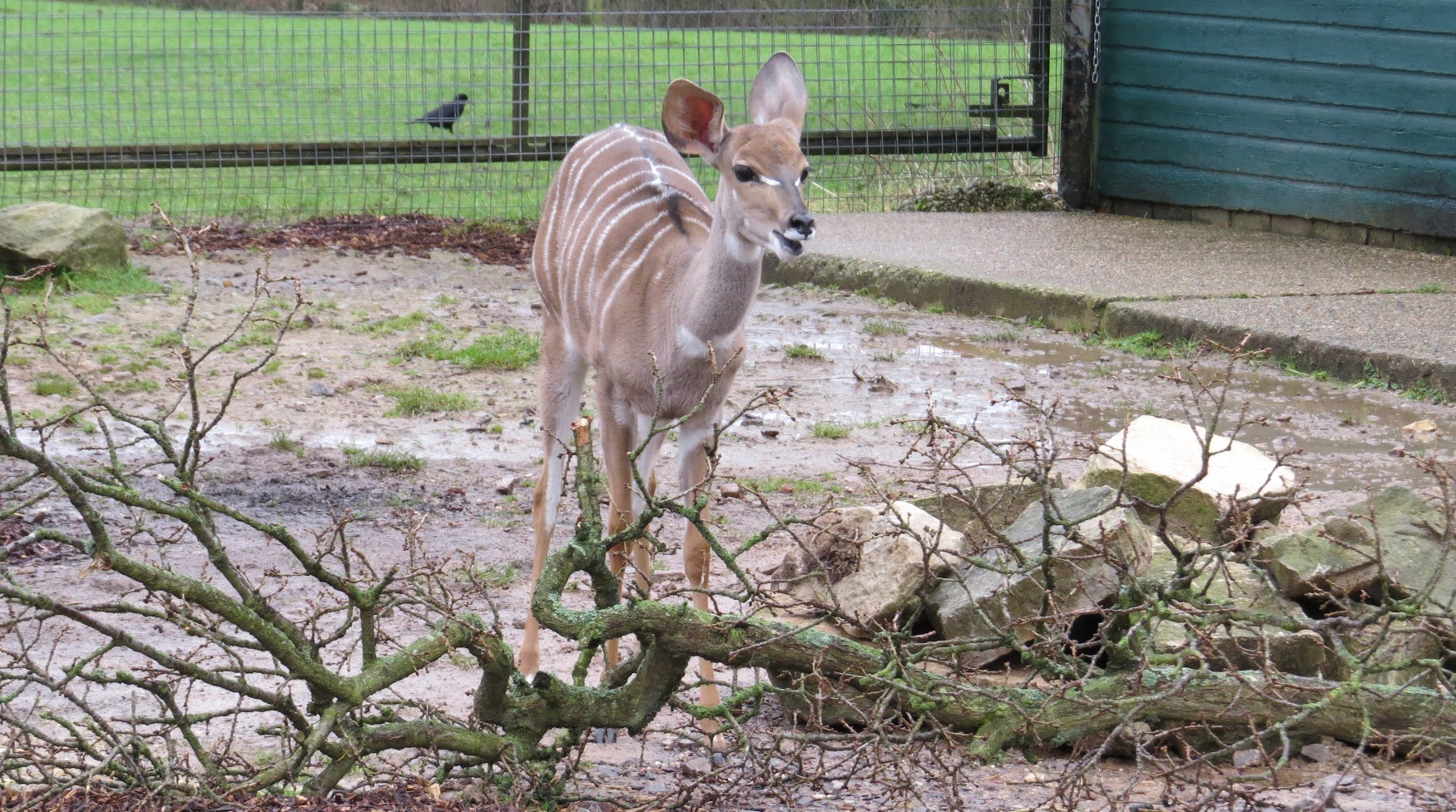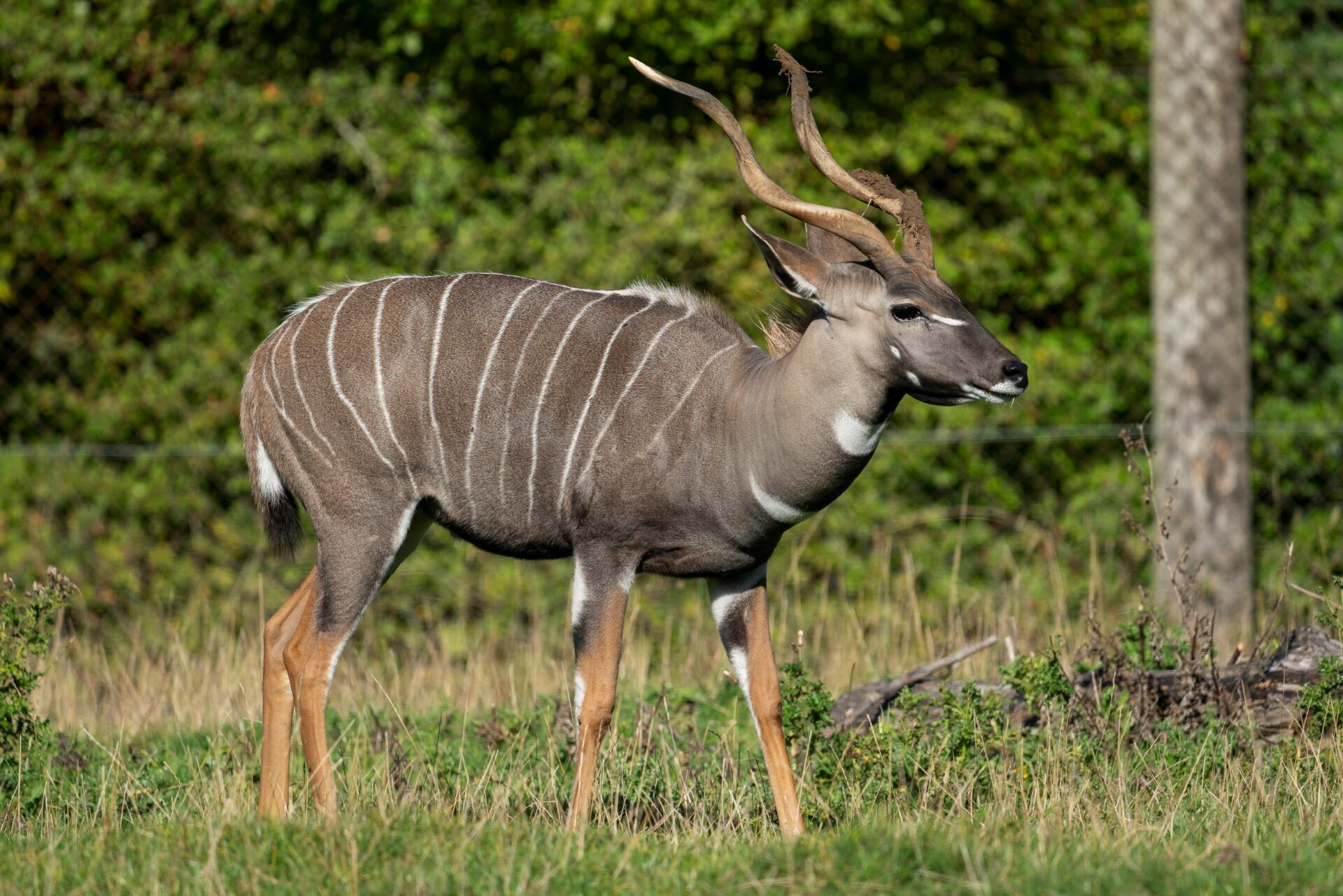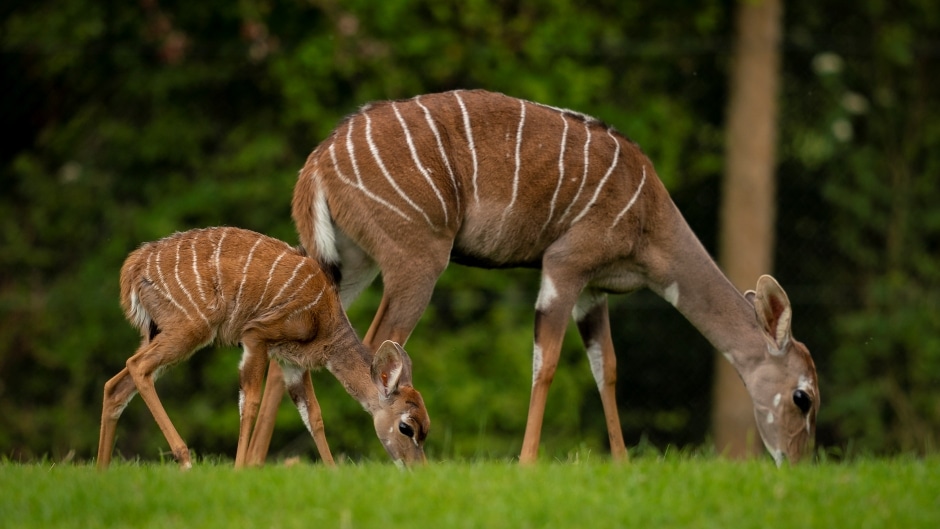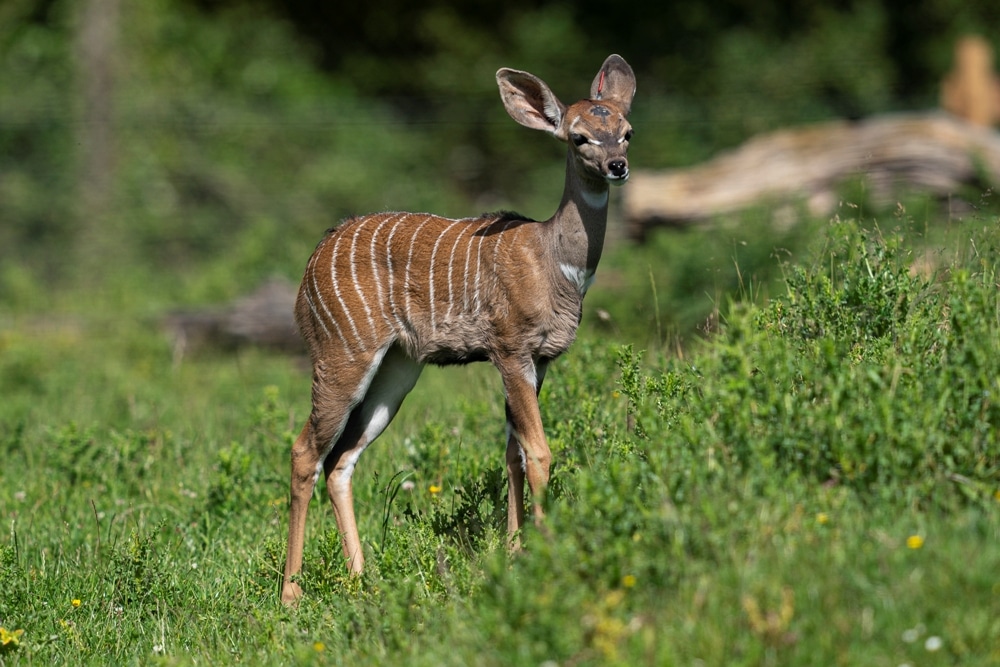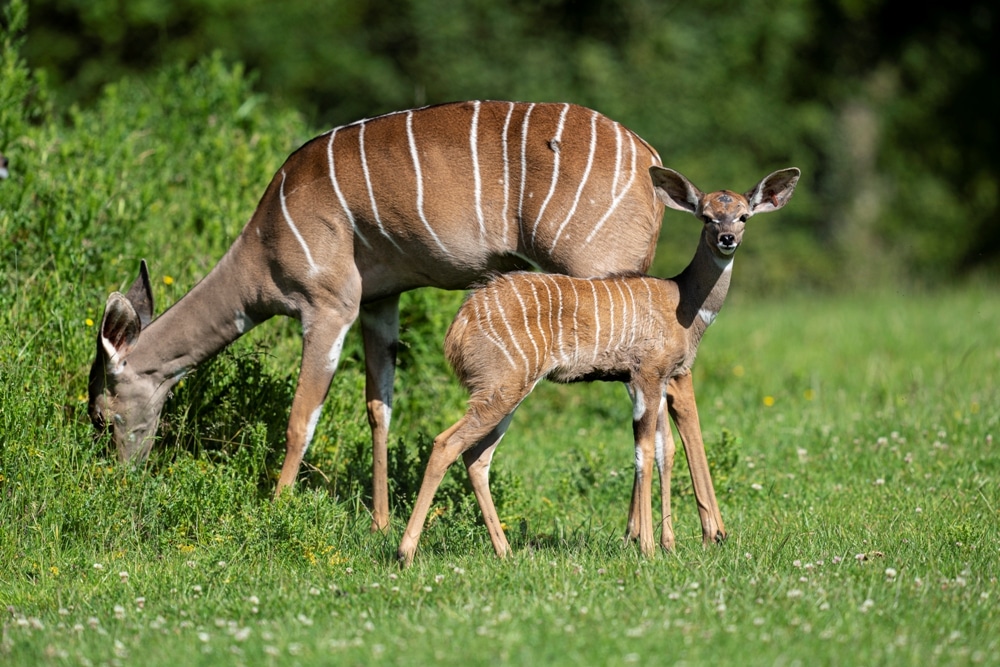Lesser kudu
Common Name: Lesser kudu
Scientific Name: Tragelaphus imberbis
Lesser kudu have 10 to 14 vertical stripes down the sides of their bodies and can even have a different number of stripes on each side.
Male and female lesser kudu look very different. Males are pale grey, and females are a bright reddish-brown. Both sexes have white stripes on their bodies. The young have the same colouring as the females until they mature.
Only the males have horns. These begin to grow from around 9 months of age reaching up to half a meter in length by maturity. Lesser kudu horns are splayed and twisted, two to two and a half times, finishing in a white tip.
Fast Facts
-
Status
Near Threatened
-
Size
Head-body males: 163-178 cm; females: 140 cm; Shoulder height: males: 18cm; females: 103cm
Weight: Males approx.
100kg.
Females approx. 65kg -
Gestation
7.8-8 months
-
Young
1
-
Life span
8-10 years
In the wild
Lesser kudu mainly eat the leaves and shoots of trees and shrubs. They get most of the water they need from their food.
This species is found in the semi-arid lowlands of Ethiopia, Somalia, Kenya and Tanzania. These shy animals tend to avoid open areas and long grass, where they would be vulnerable to predators, instead preferring areas with thick vegetation which provides both food and shelter.
Female lesser kudu are able to breed from about 1.5 years of age. The females usually leave their group before they give birth. The mothers leave their calves hidden for the first two weeks, only returning to feed them. The calves are weaned at about 6 months of age but will stay with their mother for up to 2 years, after which time males will leave the female herd to form bachelor groups, and eventually become solitary in maturity.
African carnivores, birds of prey, and large snakes all pose a threat to the lesser kudu, especially their calves. Lesser kudu are also hunted by people across their range for their meat, skin, and horns.
About a third of lesser kudu are found in protected areas, beyond which populations are significant enough in size not to warrant specific conservation actions at present.
Following the worldwide eradication of the highly contagious cattle virus in 2011, known as rinderpest, overhunting and habitat loss are the main long-term threats faced by wild populations of lesser kudu.
